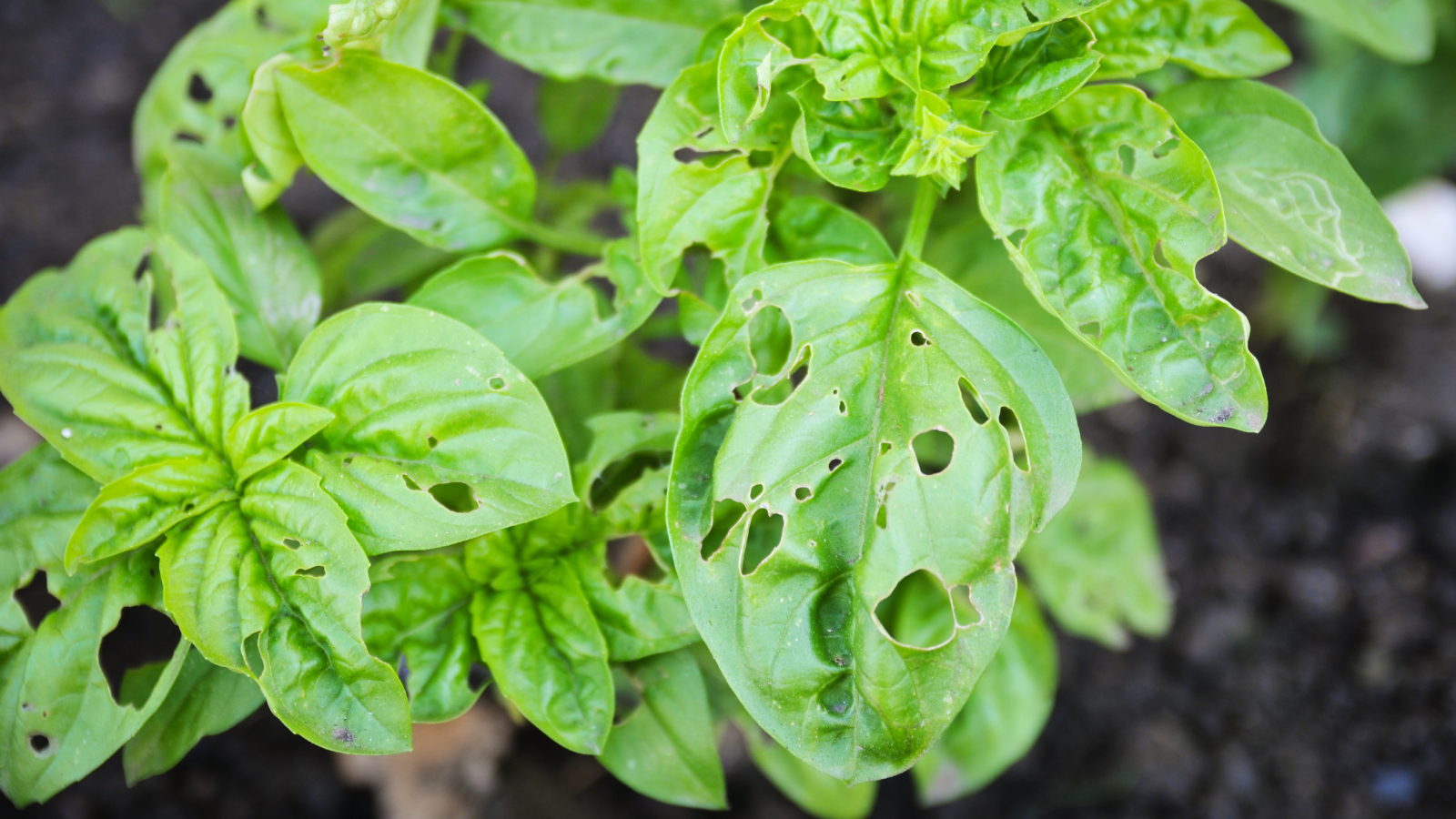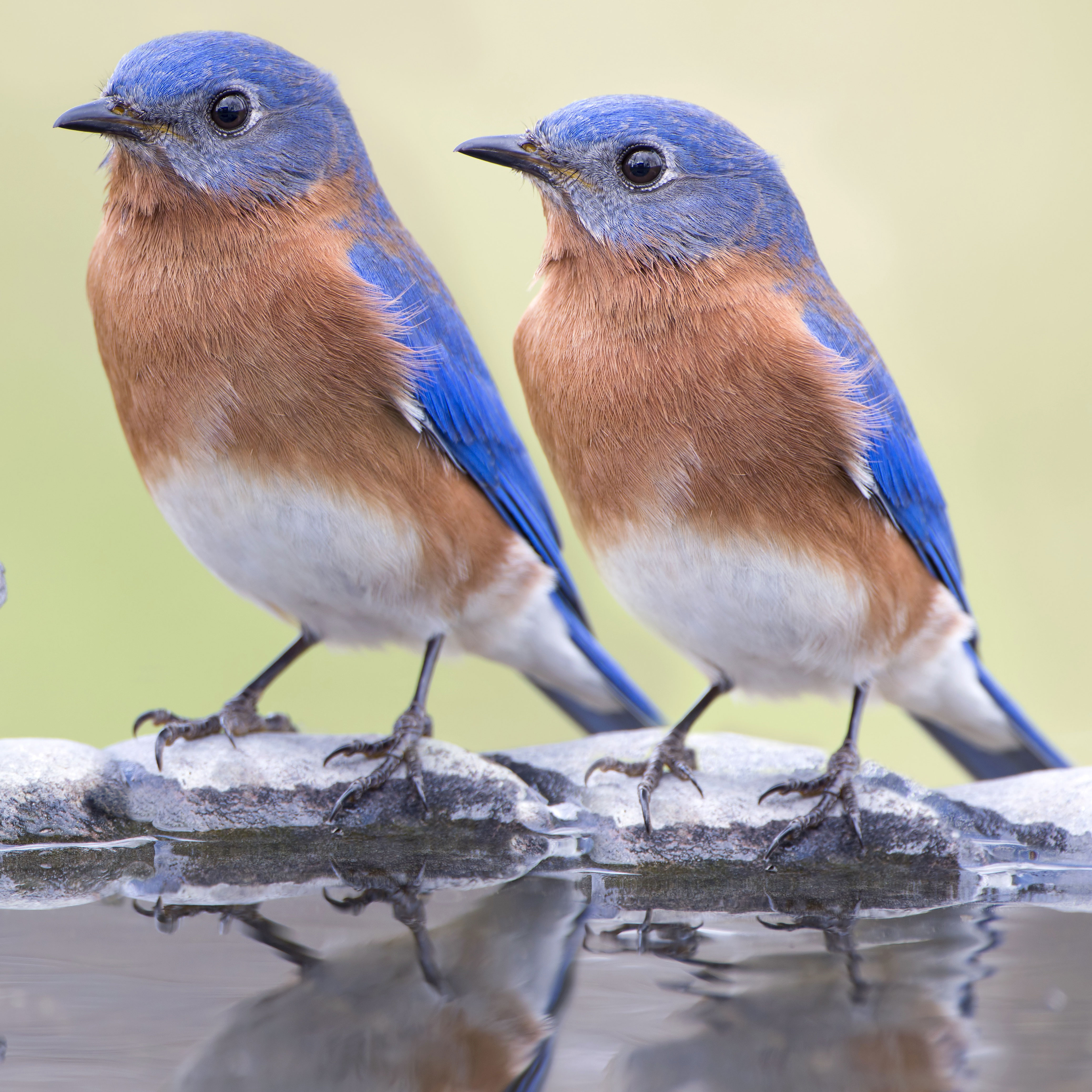Holes In Basil Leaves – How To Keep Bugs From Eating Basil
So you’re an herb lover, but you’re seeing holes in basil leaves that you can’t explain? It may not just be snails and slugs - bugs like the tasty stuff, too.

Holes in basil leaves are not deadly, but prolonged munching by a variety of pests may damage your plant.
Basil, a member of the mint family, tastes both sweet and savory with pleasant notes of mint. Used in a number of cuisines, this tender herb is loved by pests as well. It isn’t uncommon to go out and harvest some basil only to find the basil leaves have holes. Keep reading to find out what pests eat basil and how to control them.
What Is Eating My Basil Plant?
Before you can do anything about holes in your basil leaves, you need to know who the culprit is. The most common nibblers are snails and slugs, Japanese beetles, earwigs, aphids and other soft-bodied insects. Now that you know who is desecrating your basil, you need to know how to stop them.
Slugs and Snails
Mollusks move slowly but are quick to make short work out of your basil leaves. Normally a good thing, mulch provides hiding places for these pests during the day. You can either remove the mulch, although the slugs will still probably come after the basil, or cover the mulch with diatomaceous earth.
Diatomaceous earth is very sharp and pierces the skin of the soft bodied slugs which then dehydrates the pest and results in death. Water or rain allows the diatomaceous earth to soak into the soil so reapply after irrigating or rain events. In lieu of diatomaceous earth, spread crushed eggshells or wood ashes around the plants.
Garden detritus also gives these pests a place to hide and lay eggs so be sure to keep the garden clean including weeded around the basil plants.
Slugs and snails can also be hand picked at night. For the squeamish, traps can be made or bought to capture them. Look for some of the newer safer slug baits that contain iron phosphate, or there are those that contain metaldehyde (Buggeta) and carbaryl (Sevin) for non-organic growers.
Gardening tips, videos, info and more delivered right to your inbox!
Sign up for the Gardening Know How newsletter today and receive a free copy of our e-book "How to Grow Delicious Tomatoes".
Japanese Beetles
If your basil’s leaves have become skeletonized, the culprit is likely Japanese beetles. These pests also damage flowers and buds along with about 300 other species of plant. Beetles are present for about a month in the summer.
Adults are a metallic green/bronze beetle with white hair-like tufting beneath the wings and larvae are cream-white grubs found in the soil. Japanese beetles produce a generation every 1-2 years. The larvae overwinter in the soil.
Pheromone traps should not be used as they tend to attract more beetles rather than deter them. Floating row covers over kaolin clay can help deter adults. Adults can also be handpicked and dispatched in soapy water.
Parasitic nematodes introduced into the soil will help to reduce the numbers of overwintering grubs. Both neem oil and insecticidal soaps can reduce the number of adult beetles.
Earwigs
Earwigs look scary with their large pinchers, and to your basil plant they are. Experts at hiding, they feed on basil and other plants at night. They love dark, moist areas of the garden where they will hide until nightfall.
Because earwigs like hidey holes, a deterrent is to place basil grown in containers atop bricks or “feet”made for pots to raise the container and eliminate any hiding places.
It’s possible to get a handle on but not completely eradicate earwigs by using chemical controls. Carbaryl garden dust can reduce their numbers. Sprinkle the dust along the edges of the basil container or around the base of the plant. The downside is that this product is easily washed away when irrigating or during rainfall.
Aphids and Soft Bodied Insects
Aphids can be almost any color and may be found atop or on the underside of leaves and even on stems. Heavy infestations result in yellow/distorted necrosis on leaves along with honeydew, the sticky, sugary substance aphids secrete. Honeydew adds to the problem by promoting sooty mold.
An insecticidal soap can help to control aphids and other soft bodied pests. Spray early in the evening and pay attention to covering the underside of the leaves as well as above.
Made from Neem, azadirachtin, will help control a number of pests including aphids, beetles, thrips, spider mites and whiteflies.
How to Keep Bugs from Eating Basil
There are several ways to deter pests from eating basil. Cover the plant with row covers when Japanese beetles are imminent, use diatomaceous earth around the plant to deter soft bodied pests like snails and slugs, and spray with an insecticidal soap or neem ensuring entire coverage of the plant at the first sign of pest attack.
Keep the plant healthy, fed and consistently watered. Keep the area near and around the basil free from weeds and other detritus where pests might hide. Take a good look at your basil on a daily basis for any pest damage or pests that can be handpicked.
Note: Any recommendations pertaining to the use of chemicals are for informational purposes only. Chemical control should only be used as a last resort, as organic approaches are safer and more environmentally friendly.
Get Your Vegetable Know How In Book Form!
Love Gardening Know How? Our latest book, The Complete Guide to Vegetable Gardening, is available now!
Perfect for the gardener in your life, or for your own coffee table, this book boasts 224 pages of high-quality pictures, expert tips, and easy-to-follow advice to get your vegetable garden growing its best. Look for it at these sellers, and wherever quality books are sold.

Amy Grant has been gardening for 30 years and writing for 15. A professional chef and caterer, Amy's area of expertise is culinary gardening.
-
 The 3 Big Reasons Birds Aren’t Visiting Your Bird Bath – Plus, Smart Bird Bathing Ideas To Bring More Birdies Fluttering To Your Yard
The 3 Big Reasons Birds Aren’t Visiting Your Bird Bath – Plus, Smart Bird Bathing Ideas To Bring More Birdies Fluttering To Your YardYou love garden birds, so why don’t they visit your bird bath? Here are 3 key reasons why, along with quick and clever bird bath ideas to encourage feathered friends to drink and play
-
 Keep Your Patio Pest-Free This Summer With These 5 Potted Plants That Repel Mosquitoes
Keep Your Patio Pest-Free This Summer With These 5 Potted Plants That Repel MosquitoesTell biting insects to buzz off with these five potted plants that repel mosquitoes! Plus, one plant mosquitoes love that you should avoid at all costs.
